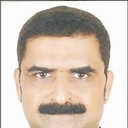A Prospective, Observational Study to Determine the Prevalence and Clinical Profile of Patients of Hypertensive Crisis in a Tertiary Care Hospital.
Ključne riječi
Sažetak
BACKGROUND
Hypertension can present in crisis form as 'hypertensive urgency'(HU) or as 'hypertensive emergency' (HE). Both the conditions are associated with significant morbidity and mortality.
OBJECTIVE
To evaluate the clinical characteristics, course of illness, end-organ damage and survival outcome in patients with hypertensive crisis.
METHODS
This prospective observational year-long study was conducted after due ethical considerations on 120 adult non-pregnant patients who presented with blood pressure of >180/120 mm Hg in the emergency medical services of a tertiary care hospital. The available data was statistically analyzed using the t-test for continuous variables and chi-square test for categorical variables.
RESULTS
Sixty two (51.67%) patients presented with hypertensive urgency and fifty eight (48.33%) with hypertensive emergency. Together they constituted 0.59% of total medical admissions and 18.04% of ICU admissions. Mean age of patients was 48.34 years and 52.48 years in HU and HE groups respectively. Headache (49.2%) and giddiness (43.3%) were the common presenting symptoms. Focal neurological deficit (p=0.001), psychomotor agitation (p=0.024), visual disturbances (p=0.048), oliguria (p=0.036) were noted significantly in patients with HE. Systolic and diastolic blood pressures were significantly elevated (p=0.001) in HE as compared to HU. Circadian peaks were noted between 2pm - 4 pm followed by 2am - 4 am and circannual peaks were noted in hot and humid months of May and October. Occurrence of HE was significantly linked with male gender (p=0.037), alcoholism (p<0.001), dyslipidemia (p<0.001) and diabetes mellitus (p<0.001). Cardiac and cerebrovascular end organ involvement was noted in 67.2% each and majority of subjects (69.9%) had more than one organ involvement. Out of total 120 study subjects, 19 (15.83%) died within first 72 hours of admission with mean age of 52.47 years. Negative survival outcome was associated with hypertensive emergencies (p=0.021), smoking (p=0.05), dyslipidemia(p=0.002), diabetes mellitus(p=0.003), cardiovascular (p=0.002) and cerebrovascular involvement(p=0.015).
CONCLUSIONS
This study showcases the characteristic features of hypertensive crises in Indian subjects, thus allowing us a better understanding of the natural history of this medical emergency.


